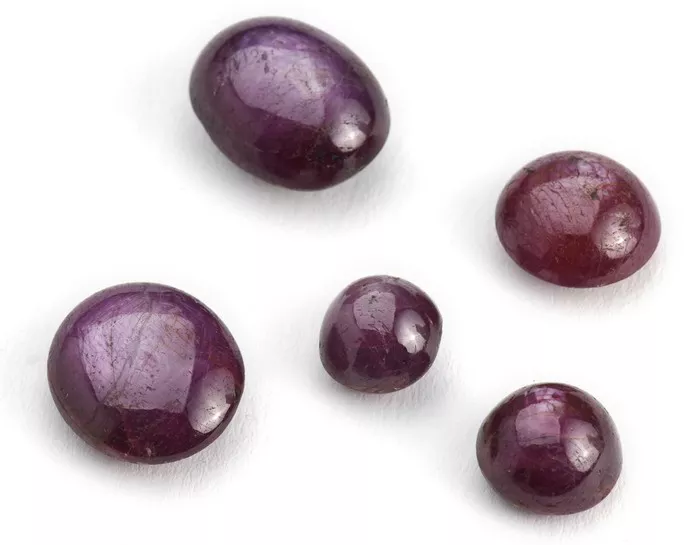Rubies, renowned for their fiery red hues, have long captivated gem enthusiasts and collectors alike. However, beyond the traditional red spectrum lies a realm of rare and captivating colors that add an extra dimension of allure to these precious gemstones. While red remains the most common color associated with rubies, it is the exceptional variations that stand out as highly sought after treasures in the world of gemology. In this comprehensive exploration, we delve into the spectrum of rare ruby colors, from the elusive pigeon blood red to the subtle pinkish and purplish nuances that elevate these gemstones to unparalleled levels of desirability.
Ideal Red and Pigeon Blood Red:
When envisioning the quintessential ruby, the term “pigeon blood” often comes to mind. Historically, pigeon blood red referred to a soft, glowing hue with slight purplish or pinkish undertones, reminiscent of the color seen in the veins of a freshly slaughtered pigeon. This vivid and highly coveted shade is considered the epitome of ruby excellence.
Burmese rubies, hailing primarily from the Mogok region of Myanmar (formerly Burma), have long been renowned for their exceptional quality, particularly their association with the pigeon blood red color. Burmese rubies exhibit a velvety luster and a vivid, saturated red hue that epitomizes the ideal of pigeon blood red. These gemstones are revered for their rarity and exceptional beauty, commanding top prices in the global gem market.
The allure of Burmese rubies lies not only in their mesmerizing color but also in their cultural and historical significance. For centuries, Myanmar has been revered as the source of some of the world’s finest rubies, with the Mogok region earning a reputation as the “Valley of Rubies.” The rich history and mystical allure surrounding Burmese rubies further enhance their desirability among collectors and connoisseurs.
Color Grading and Value:
In the world of gemstones, color is one of the most important factors influencing value, and rubies are no exception. The finest rubies boast a pure, vibrant red to slightly purplish-red hue that exudes richness and depth. Gemologists assess ruby color based on factors such as hue, tone, and saturation, with the most prized specimens exhibiting a vivid, intense red coloration.
Pure red rubies, devoid of any secondary hues such as orange or purple, command the highest prices due to their rarity and aesthetic appeal. These gemstones, often referred to as “stoplight red” or “traffic light red,” are highly coveted by collectors and enthusiasts alike. Rubies with overtones of orange or purple are generally considered less valuable, although exceptional examples with these secondary hues can still fetch considerable prices.
In addition to hue and saturation, the presence of inclusions can significantly impact a ruby’s value. Rubies that are free of eye-visible inclusions are exceptionally rare and highly prized for their clarity and brilliance. Such specimens command premium prices in the gem market, reflecting their rarity and exceptional quality.
Differentiating Ruby and Pink Sapphire:
While rubies are traditionally associated with deep red hues, the distinction between ruby and pink sapphire can sometimes be blurred. Historically, the term “ruby” encompassed shades of red, including those that veered towards pink. This historical interpretation has led to varying definitions of what constitutes a ruby versus a pink sapphire.
In modern gemology, the primary distinction between ruby and pink sapphire lies in the intensity of color. Rubies are characterized by their deep red hues, while pink sapphires exhibit lighter shades ranging from pale pink to vibrant magenta. Despite this distinction, cultural interpretations and market preferences may influence the classification of certain gemstones, leading to differences in labeling and valuation.
Other Rare Ruby Colors:
Beyond the classic pigeon blood red, rubies can exhibit a range of other rare and captivating colors that add diversity to their allure. Pinkish-red and purplish-red variations, while less common than their traditional red counterparts, possess a unique charm that appeals to discerning collectors.
Pinkish-red rubies exude a delicate, feminine allure with hints of pink that soften the overall appearance of the gemstone. These gemstones are prized for their romantic appeal and subtle elegance, making them a popular choice for jewelry connoisseurs seeking a touch of sophistication.
Purplish-red rubies, on the other hand, showcase a regal hue that borders on the mystical. With undertones of purple that add depth and complexity to the gemstone, purplish-red rubies possess a rare and alluring beauty that sets them apart from more conventional varieties. Collectors are drawn to these gemstones for their unique coloration and enigmatic charm, making them highly coveted treasures in the world of gemology.
In conclusion, while red may be the most commonly associated color with rubies, the world of rare ruby colors offers a captivating array of hues that elevate these gemstones to new heights of desirability. From the timeless allure of pigeon blood red to the subtle nuances of pinkish and purplish variations, each rare ruby color possesses its own unique charm and appeal. Whether sought after by collectors or cherished as symbols of love and passion, rare ruby colors continue to captivate and inspire admiration among gem enthusiasts worldwide.


